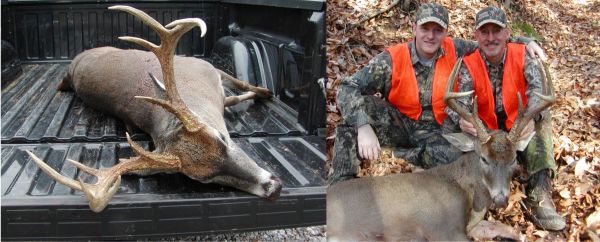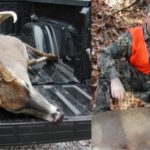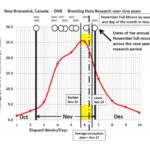
Scientists put the debate to rest
With the whitetail rut fast approaching, I thought it would be perfect timing to revisit and discuss a subject that has been debated for decades in deer camps far and wide.
Back in February of this year my Happy Trails topic addressed whether or not the moon really matter.
The latest science says, “No.” I had just read an extremely interesting article titled “Moon Theories Tested by Top Deer Scientists” in a popular national magazine.
The article, co-written by three well-known and highly respected deer scientists here in the Southeast, concluded that there have been no scientific studies to date that demonstrate any correlation between moon phase and deer activity or movement.
Their bold statement was based on a plethora of data and research that had been conducted over a number of recent years. They discussed in general terms what had scientifically brought them to their conclusion.
It has been a well-known fact for many years now that hormone changes in whitetail deer that trigger breeding and the rut are brought on by seasonal changes in daylight length.
The exact rut response and the timing of the response vary quite a bit regionally. For example, many northern and northeastern deer populations experience the rut in mid- to late November, while here in the Deep South the rut generally occurs four or five weeks later — from late December into early January.
I well remember my time spent over the years pouring over moon phase data and soluner tables, trying to gain any edge I could get in predicting deer activity in conjunction with the rut. It usually didn’t work out too well, but that didn’t decrease my zeal for using the moon as a predictor.
I could have saved myself a whole bunch of time and effort if I had known then what I know now.
Here where I hunt in westcentral Mississippi, the DMAP mean breeding date falls on or within a few days of either side of Jan. 2 each and every year.
What all this tells me is that in future hunting seasons I should be in the woods as much as possible from around Dec. 20 through about Jan. 5, no matter what phase the moon is in.
A more-recent article just published in a magazine dedicated to deer management laid out the case in greater detail, along with the specific science behind this bombshell conclusion.
Being an engineer, I couldn’t help but dive right in, so I carefully studied and analyzed the data that was presented in this article. and then plugged the same data points into my personal spreadsheet.
This allowed me to format the raw data from the article into a graph that clearly illustrated to me just how the deer scientists came to this startling conclusion, plus how solid the underlying science behind it really is.
The subject data comes from one of the more compelling studies and was collected over a nine-year period between 1997 and 2005 by the New Brunswick, Canada, DNR.
The biologists collected biological data, which included fetal measurements, from road-killed pregnant does.
The data they collected was compiled into numbers representing the percentage of does bred per week during the annual sample period from late October through the end of December.
This effort resulted in a representative collection of fetal data across the entire nine-year period.
When the resulting data is put into a chart, it becomes abundantly clear that the moon plays no role as a rut trigger. Take a look at the accompanying chart and you will readily see why the deer scientists came to their conclusion.
I put all of the collective nine years of data into this one composite graph. The average or mean breeding window fell within a seven-day period every year, and for eight of the nine years of data it fell in the same four-day period — Nov. 26-29.
Now, with that in mind, look at the round circles at the top of the graph that depict the full-moon dates during the month of November across the entire nine-year data period.
Historically, the full-moon dates ranged from the first of the month during two of the study years to the last day of the month during one year, and then everywhere in between throughout the month of November.
While the full-moon date during November historically bounced all over the place from year to year, the rut-induced average breeding date stayed relatively constant within the same four- to seven-day window.
As the trial lawyer would say, “I rest my case.”
As if we need to add any additional emphasis, deer researchers at the University of Georgia have also accumulated a strong database from at least seven states covering time spans of anywhere from three to 19 years for each given deer population that was studied.
To paraphrase their conclusions, deer breeding dates are primarily influenced by photoperiod (day length) and not by moon phase.
To be perfectly clear though, normal daily deer movement, or lack thereof, is influenced by a whole host of overlapping factors — weather, food availability, hunting pressure and yes, I will also add certain moon phases.
Researchers have seen where the moon appears to have some slight influence at times on deer movement, but the moon phase has nothing to do with and does not alter annual breeding dates, which deviate little from year-to-year.
The real moral to this story is to look back at the timing of breeding activity on your hunting property in seasons past. This will help you make the best use of your precious hunting time and vacation each year.
You simply can’t go wrong with this recipe.




